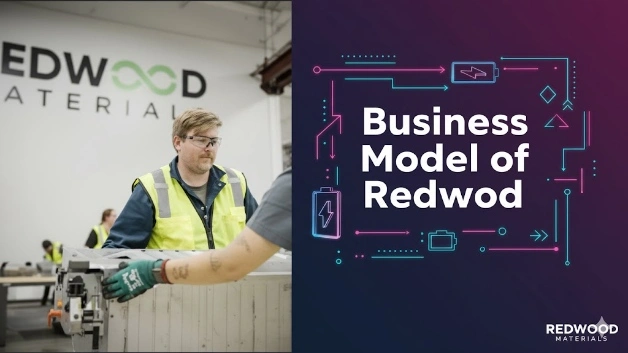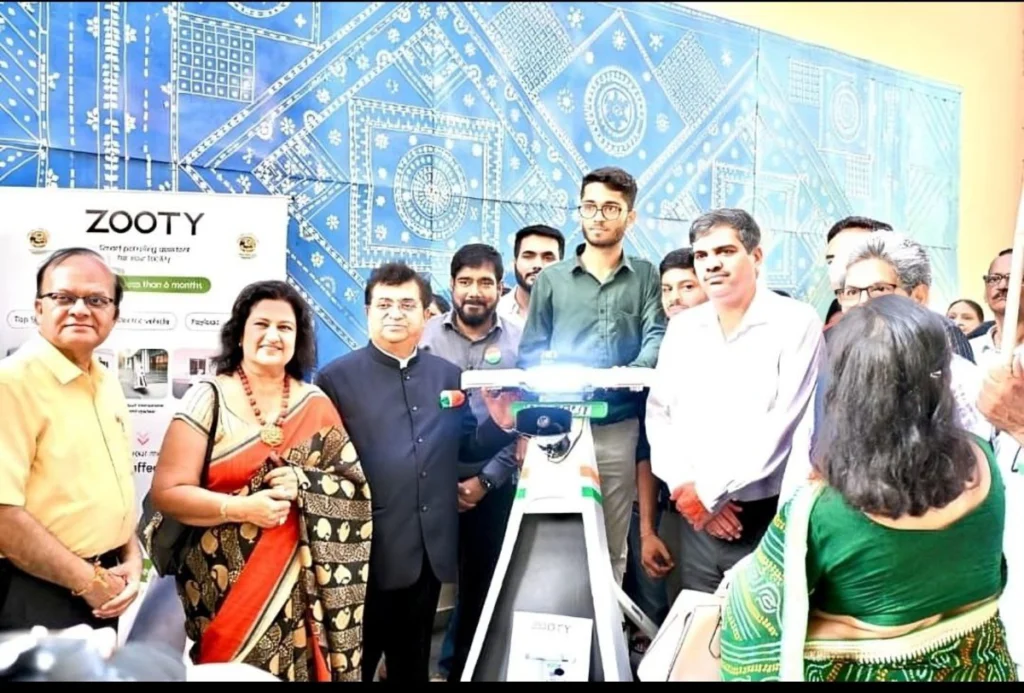| Aspect | Summary |
|---|---|
| How Redwood Materials Started | Business Model Of Redwood: Redwood Materials was founded in 2017 by JB Straubel, the former Tesla CTO who spearheaded the company’s battery and powertrain programs. His vision emerged from firsthand awareness of the unsustainable reliance on mined lithium, cobalt, and nickel, which powered the EV revolution he helped build. Seeing the growing wave of used batteries destined for landfills, Straubel launched Redwood Materials to close the loop—turning waste batteries into valuable raw materials. Starting in Nevada with a small facility, the company began collecting scrap from Panasonic and other battery manufacturers, quickly proving that high recovery rates for critical materials were achievable at scale. |
| Present Condition | Today, Redwood Materials stands as the United States’ leading integrated battery recycling and materials production company. With a $6 billion valuation after raising $350 million in Series E funding led by Eclipse and NVentures, it has recovered more than 70% of North America’s used EV battery packs. The company now operates a large-scale facility in Nevada that extracts lithium, cobalt, nickel, and copper, supplying them back to partners such as Toyota, GM, and Panasonic. It has expanded into cathode manufacturing and launched Redwood Energy, a grid-scale storage initiative that repurposes retired EV batteries to power AI data centers and renewable energy systems. |
| Future of Redwood Materials and Industry | The future of Redwood Materials aligns with the rapidly accelerating global shift toward electrification. As the battery recycling market grows from $12.8 billion in 2025 to a projected $19.8 billion by 2030, the company’s dual focus on recycling and cathode production positions it at the center of a trillion-dollar transition. By 2028, it aims to deploy 20 gigawatt-hours of grid-scale storage while deepening its role in critical mineral independence for the U.S. The broader industry will see circular supply chains become as strategic as semiconductor manufacturing, and Redwood Materials is poised to become the backbone of this transformation—turning the “linear” mining economy into a circular ecosystem. |
| Opportunities for Young Entrepreneurs | Redwood Materials’ rise highlights a massive opportunity space for entrepreneurs passionate about sustainability, materials science, and energy technology. The circular economy is still in its infancy, and gaps remain in collection logistics, digital traceability of batteries, and low-cost recycling technology. Young founders can explore innovations in automation, supply chain software, AI-driven material recovery, or even localized battery repurposing startups. Collaboration with companies like Redwood Materials through supplier programs or technology partnerships can accelerate entry into the green industrial ecosystem while supporting global electrification goals. |
| Market Share | Redwood Materials currently dominates the North American EV battery recycling market, handling over 70% of recovered battery packs in the region. As of 2025, the company operates within a global market expected to reach nearly $20 billion by 2030, with a projected compound annual growth rate near 9.2%. Its expanding partnerships with major automakers and energy firms solidify its growing share, while the integration of cathode production strengthens its hold on both upstream and downstream battery value chains. This integrated position allows Redwood Materials to command significant pricing power in an industry still defining its competitive benchmarks. |
| MOAT (Competitive Advantage) | The company’s strongest moat lies in its vertically integrated circular materials platform. Redwood Materials combines battery recycling, material refining, cathode manufacturing, and second-life energy storage into a unified ecosystem—unlike competitors focused on single functions. Its proprietary recovery process achieves high yield rates for lithium and nickel, reducing dependency on international mining operations. Long-term contracts with Panasonic, GM, Toyota, and Volkswagen ensure consistent input and offtake flows, while DOE funding and domestic infrastructure support further entrench its leadership. This synergy between technological mastery and industrial scale is difficult for new entrants to replicate. |
| How Redwood Materials Makes Money | Redwood Materials generates revenue across three primary channels. First, through battery recycling, it charges partners for processing end-of-life packs and scrap materials. Second, its refined materials and cathode production business sells recovered lithium, cobalt, nickel, and copper back to manufacturers at stable margins, leveraging circular efficiency. Third, Redwood Energy creates additional income by deploying repurposed EV batteries for grid-scale energy storage, serving AI data centers and renewable projects. Together, these streams create a self-reinforcing economic loop where each business unit feeds the next, maximizing both profit and sustainability impact. |
I’m Araib Khan, an author at Startups Union, where I share insights on entrepreneurship, innovation, and business growth. This role helps me enhance my credibility, connect with professionals, and contribute to impactful ideas within the global startup ecosystem.




